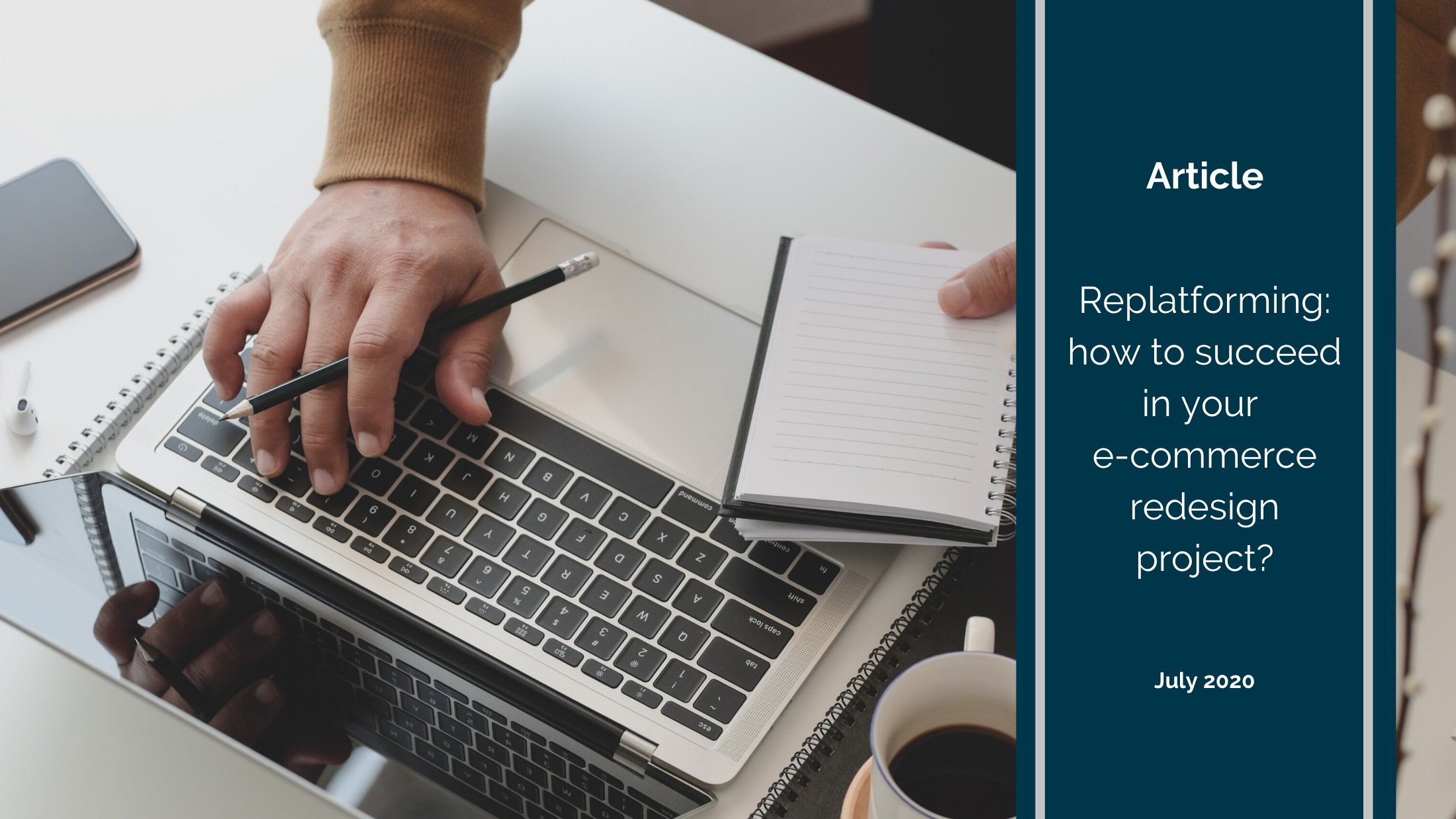
02 Jul Replatforming: how to succeed in your e-commerce redesign project?
The Covid crisis has accelerated the development of e-commerce platforms. During the lockdown, consumers turned to these platforms to make their purchases, and their habits towards online websites were modified. As a result of the Magento version 1 reached its end of life and the retailers’ need to maintain their online activity, an e-commerce replatforming strategy makes sense.
– On average, an e-commerce website can increase a store’s turnover by 14% for a retailer who uses both channels simultaneously. – (FEVAD)
E-commerce website redesign: When to start?
Since June 30th, Adobe has officially ceased to support the Magento 1 version and is now providing its version 2. Consequently, e-retailers must replace their Magento version, otherwise, they may encounter piracy and payment issues. Therefore, the migration to version 2 or the complete redesign of your platform is required.
Other factors can initiate a redesign strategy such as :
- The graphic charter of your website is no longer up-to-date. Considering that there are between5 and 15 seconds to convince visitors to stay on your site, a graphic redesign may be required.
- Unfortunately, your website’s performance isn’t up to expectations. Page loading time too long? Traffic decline on your website? Conversion rate stagnating? These indicators may reflect a need to redesign the customer online journey.
- Your website is not optimised for SEO. As a consequence, it is recommended to evaluate the current positioning of your website. It will allow you to determine your strategic keywords and then capitalise on them during the migration to maintain your visibility on the search engines.
- Your website is not entirely optimised for mobile. Google’s algorithms improve your SEO if you are mobile-friendly. Therefore, having a “mobile-first” approach is necessary to capture mobile users.
- You want to add new features to improve the customer experience of your website. Has your company structure evolved? Are there missing functionalities on your pages? Therefore, it is useful to identify every new feature you want to implement and to verify if the platform you are currently using allows you to install them.
Steps to follow:
- Measuring current performance and results: To evaluate potential ways to improve your pages or redesign your e-commerce site over time, it is necessary to measure current performance. The following KPIs should be monitored: Traffic / Behaviour / Conversions / SEO.
- Define a redesign objective: Following a S.M.A.R.T. (Specific, Measurable, Achievable, Relevant, and Time-Bound) strategy.
- Analyse visitors’ behaviour, needs and motivations on your website: A tool to measure the clicks on your pages and the buying path of your visitors can be advisable in the creation of the future platform.
- Consider your current SEO: To capitalise on your existing SEO, any modifications (changes in texts, URLs or page redirections) require prior consideration, to not impact your ranking.
- Forecast your business strategy, your medium/long term objectives: For example, can this new platform allow you to develop your offer (products, services, international markets)? Improve your time to market? Or to integrate new channels?
E-commerce website redesign: Let’s start!
The website redesign process is a key step in the company’s life enabling it to reconsider its objectives, improve its performance, define new KPIs, boost its ranking, etc. Indeed, the website redesign or migration can be motivated by many internal (new offer, rebranding, internationalisation, etc.) or external (changes in technologies, SEO rules or user behaviours) strategy reasons.
An e-commerce website redesign project can sometimes be perceived as risky and costly, but it can become a real opportunity, with a significant ROI, as long as certain rules are respected.
Our B.D.C. consultants accompany brands, SMEs and retailers at every step of their project: from the digital strategy definition to the development of their return on investment, including user experience, visibility and more. Our expertise in e-commerce projects enables us to provide customised solutions adapted to the operational environment of each company.
If you are interested in finding out more, please contact our team! We will be happy to talk to you.
Contact :
Elodie Garicoitz
Retail & Digital Consultant
elodie@bdc-retail.com

